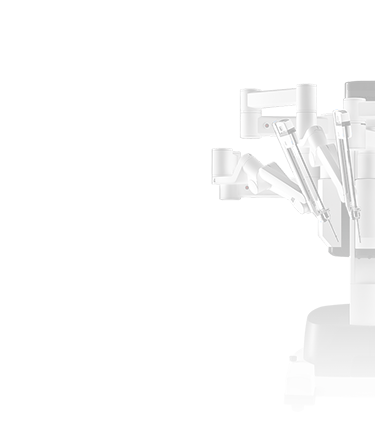Preparation for the surgery
Patients in the pre-, peri- and post-operative period are under the care of an interdisciplinary team consisting of a surgeon an anaesthesiologist, a psychooncologist, physiotherapist and dietician as well as other specialty doctors depending on the overall health status. The necessary preparations include assessment of full blood count and blood smear and of kidney function as well as cross-matching.
Particular attention is given assessment made by anaesthesiologists and other specialist of patients with respiratory and respiratory diseases as well as those suffering from congestive heart failure and valvular insufficiency due to the increased risk of complications in their cases.
The anaesthesiologist starts perioperational antithrombotic therapy. Depending on the patient’s overall condition, they may also be assisted by other specialist in order to put in place the optimal pharmacological procedure.
The psychooncologist supports patients with cancers as well as their loved ones during the whole journey through the disease. They may also assist in minimising the adverse mental effects that the patient and his family experience in connection with the disease as well as in building a system of support to the patient, both internal (sense of worth, optimism, creativity and sense of humour) and external (family, significant others, friends and fellow workers). They also provides instruction on how to transform the attitude and thoughts that have a weakening effect on the patient and on reducing techniques, such as visualisations, relaxation or breathing exercises.
The physiotherapist works with the therapy and functional assessment of the pelvic floor and the overall condition of the patient. Physiotherapy used before and after the surgical intervention enables appropriate preparation for the procedure and maintaining its effects. Rehabilitated patients have a faster recovery rate with regard to the sexual function and urinary continence. Appropriate physiotherapy on the day of the procedure prevents complications in the form of pneumonia and venous thrombosis.
Of great importance for the recovery after cancerous diseases or extensive surgical interventions is correctly balanced nutrition. Therefore, the therapeutic team includes a dietician.
The procedure
Hysterectomy using the robotic method is performed in general anaesthesia and the duration of the procedure depends on the size of the uterus and is on average approx. 90 minutes. Venous access is established in in the region of the patient’s arm or wrist. This route is used to administer medication and infusion fluids. A sterile catheter is inserted in the urinary bladder which is then emptied of urine. Then the surgeon makes a small incision on the patient’s abdomen (in the umbilical region) through which a camera is introduced after the abdominal cavity has been filled with carbon dioxide. Under visual control, 2 o 3 more instruments are introduced through small incisions in the skin in the lower abdomen. The operator gradually resects the uterus using a surgical instrument and coagulates blood vessels in order to minimise blood loss. The resected uterus is cut into smaller parts and removed from the abdominal cavity laparoscopically or transvaginally. Occasionally, it is necessary to insert a small drain at the operation site which is then removed, usually after 2-3 days following the procedure.
The robot makes it possible to perform hysterectomy with minimum access and also with greater efficiency, dexterity and control than in the classic access. The advantage of robot assisted procedures over the conventional surgery results from the application of three-dimensional visualisation using a highly advanced 3D technology with 20x magnification. This provides the surgeon with a more accurate three-dimensional image of the area operated on, which in turn allows them to better evaluate the anatomical conditions and carry out more accurate resection of tissues while minimising the risk of complications. With the EndoWrist® technology the system is more precise and eliminates the tremor from the surgeon’s hands.
The system is a better tool, as compared with the classic or laparoscopic access, for resecting and removing lymph nodes while protecting the autonomic nerves during oncological procedures. Robot-assisted surgery enables surgical oncologists to perform minimally invasive, precise and complete procedures with good oncological clearance.
In comparison with procedures performed using the classical or partly laparoscopic methods, the use of a robot enables:
- collection of at least several tens of percent more lymph nodes
- smaller number of complications
- minimally invasive hysterectomy for large-sized uteri
- minimally invasive access in obese patients
- reduction of postoperative pain
- reduced blood loss
- better cosmetic effect
- shorter stay at hospital
- faster recovery
- possibility of operating on patients with a negative family history
- better cosmetic effect compared with the classic techniques

 +48 785 054 460
+48 785 054 460 










